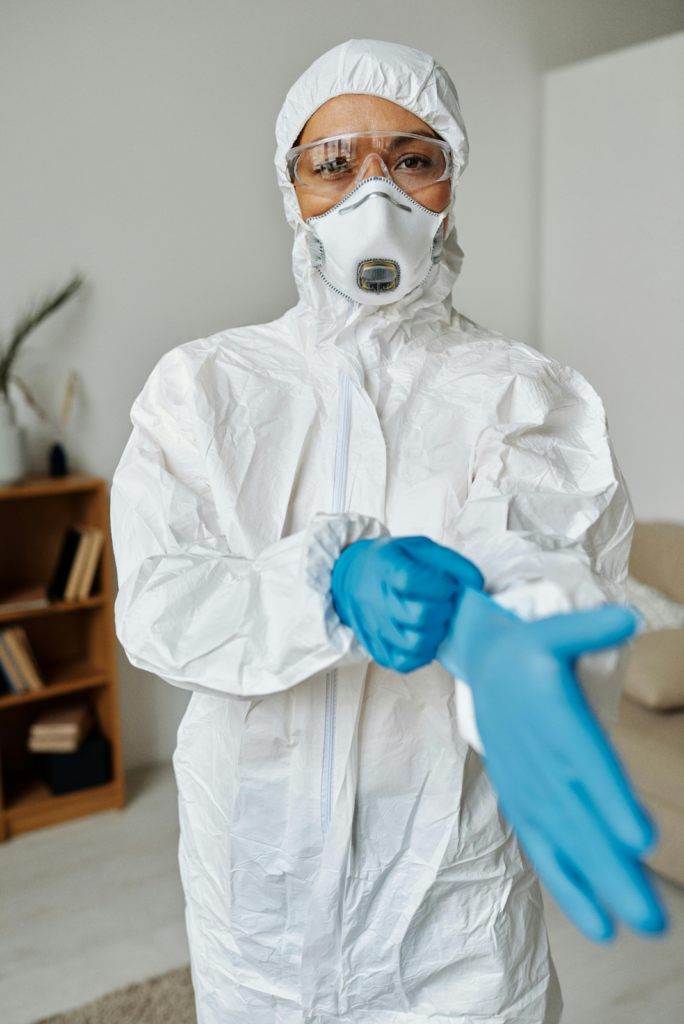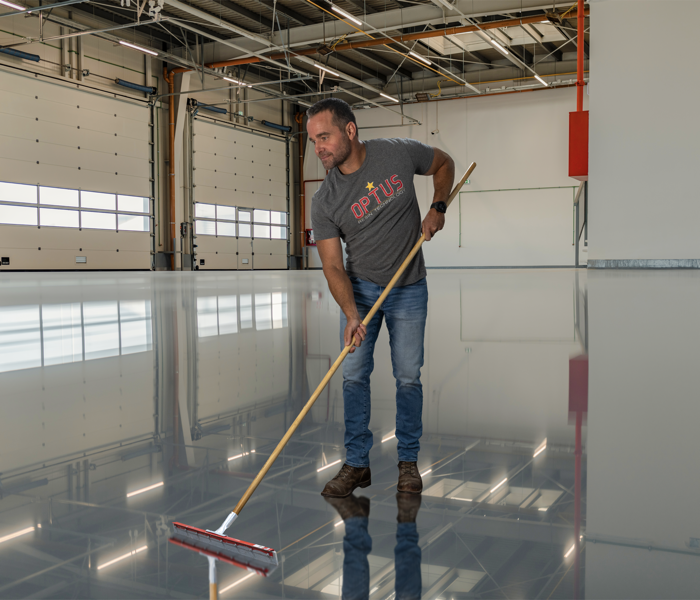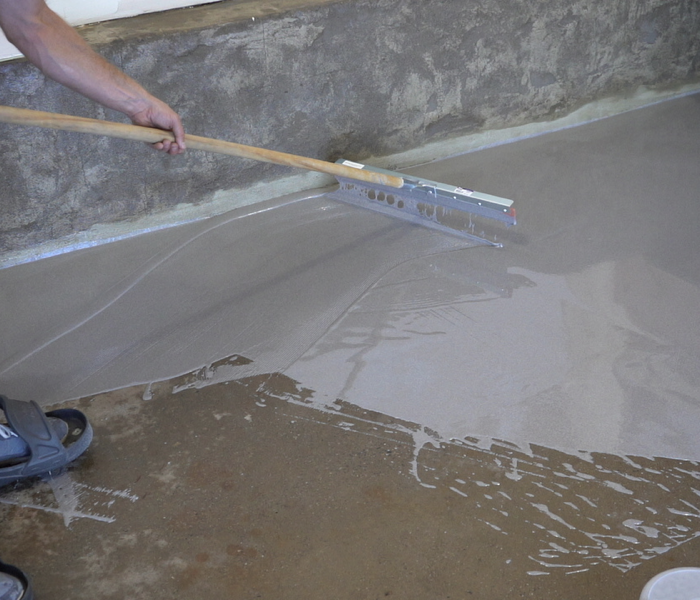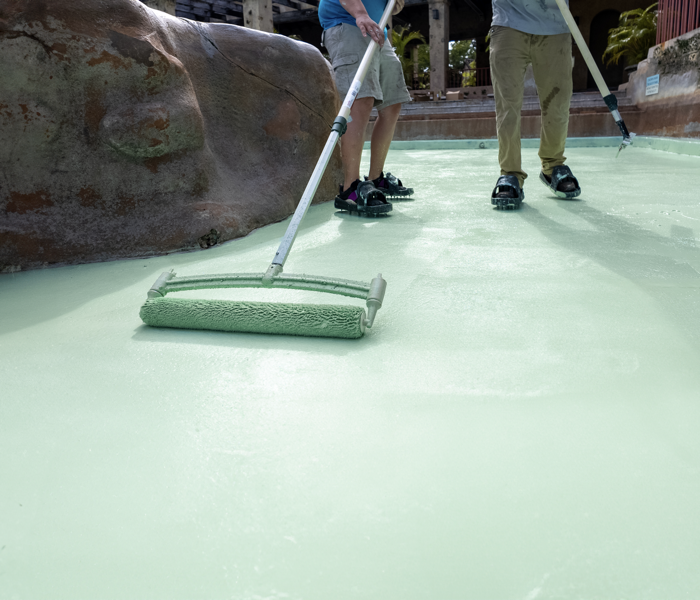
When your skin touches resin, it can lead to irritation. This is especially true for epoxy resin. Our article helps you safely remove the sticky substance. Let’s keep your skin safe.
Key Takeaways
- If resin touches your skin, it can cause irritation including dermatitis, especially with types like epoxy resin which may also lead to allergic reactions.
- Protective measures such as wearing gloves, long sleeves, using proper ventilation, and personal hygiene are crucial when working with any type of resin to minimize skin exposure and prevent health risks.
- In case of accidental contact with the skin, washing the area thoroughly with soap and water immediately is important for removing the resin and reducing potential irritation or allergic reactions.
- Different types of resins pose various levels of risk; while silicone resin is less likely to irritate than epoxy or polyester resins, all require caution during use to avoid direct skin contact.
- Safe disposal of resin waste according to local regulations helps protect both human health and the environment from potential harm caused by improper handling.
Understanding Different Types of Resin
Resins come in various types such as epoxy, polyester, polyurethane, silicone, and alkyd. Each type has specific properties and uses, making it crucial to understand their differences before working with them.
Epoxy resin
Epoxy resin can harm your skin and lead to irritation, also known as dermatitis, if it makes contact. This type of resin often requires mixing with a hardener before use, posing an additional risk for skin exposure.

Soap and water might remove some epoxy from your hands but won’t always get rid of all traces effectively.
To prevent epoxy dermatitis and other skin reactions, it’s crucial to wash the area thoroughly if epoxy resin touches your skin. Removing cured epoxy presents its own challenges; therefore, knowing the right methods for safe removal is essential for maintaining skin health and preventing discomfort or potential allergic reactions.
Protective measures are key while handling this material to avoid direct contact with the skin altogether.
Polyester resin
Polyester resin can also cause skin irritation upon contact. It is crucial to protect the skin from exposure to this type of resin, as it can lead to dermatitis and inflammation. When working with polyester resin, be sure to wear protective clothing and gloves.
In case of accidental skin contact, immediately wash the affected area with soap and water. Prevention is key when it comes to handling polyester resin safely, so taking proper precautions against skin exposure is essential.
When managing polyester resin, remember that minimizing skin contact through proper safety measures is vital for preventing discomfort and potential health risks associated with its use.
Polyurethane resin
Polyurethane resin can cause skin irritation and allergic reactions if it comes into contact with the skin. It may also result in dermatitis upon exposure. Protective measures, such as using gloves and proper ventilation, should be taken to prevent direct skin contact when working with polyurethane resin.
In case of accidental contact, washing the affected area promptly and thoroughly is crucial to minimize potential health effects.
Moving on to safety precautions when working with resin…
Silicone resin
Silicone resin is known for its skin-friendly properties, making it less likely to cause irritation compared to other types of resin. However, it’s still important to take precautions and avoid direct contact with the skin.
Despite being less irritating than epoxy resin, proper protective equipment should still be used when handling silicone resin to minimize any potential skin exposure. If silicone resin does come into contact with the skin, wash it off thoroughly with soap and water as soon as possible to prevent any potential irritation or health effects.
With proper safety measures in place, such as using protective gloves and ensuring good ventilation when working with silicone resin, the risk of skin exposure can be minimized. This proactive approach can help ensure a safe and comfortable experience when using this type of resin for various projects.

Alkyd resin
Alkyd resin is a synthetic resin derived from the reaction of phthalic anhydride and glycerol. It is commonly used in oil-based paints, stains, and varnishes due to its quick-drying properties.
Alkyd resin can cause skin irritation upon contact, as it contains chemicals that may lead to dermatitis in sensitive individuals. When alkyd resin comes into contact with the skin, it should be immediately washed off with soap and water to prevent any adverse reactions.
Gloves and protective clothing should be worn when handling products containing alkyd resin to minimize the risk of skin exposure.
Potential Risks of Resin Exposure
Resin exposure can pose various risks, including skin irritation and potential allergic reactions. It may also lead to dermatological reactions and even chemical burns if proper precautions are not taken.
Inhalation risks
Inhaling resin fumes can lead to respiratory irritation and potential lung damage, as some resins release toxic chemicals when they cure. Proper ventilation and the use of respirators are crucial in minimizing the risk of inhaling harmful fumes.
It’s important to note that uncured liquid 3D printing resins emit volatile organic compounds (VOCs) that can be hazardous if inhaled over a prolonged period. Always work with resin in well-ventilated areas or use exhaust fans to remove airborne particles and prevent inhalation risks.
Skin irritation
Epoxy resin can cause skin irritation and dermatitis upon contact, leading to discomfort and inflammation. This is due to the chemicals present in the epoxy resin that can trigger an allergic reaction or irritate the skin.
When epoxy comes into contact with the skin, it’s crucial to promptly wash it off thoroughly with soap and water. Additionally, liquid 3D printing resins are toxic and may also irritate the skin.
To avoid such issues, protective measures must be taken when handling resin to minimize direct exposure.
Cured epoxy on the skin poses risks as well; thus, knowing safe methods for removal is essential. It is advisable not only to use proper ventilation but also personal protective equipment while working with resin to reduce both skin contact and inhalation of harmful fumes.
Eye irritation
Exposure to resin can cause eye irritation, leading to discomfort, redness, and inflammation. Contact with resin fumes or splashes may result in acute irritation, causing a stinging sensation and excessive tearing.
It is crucial to flush the affected eye with water for at least 15 minutes if it comes into contact with resin. Promptly seek medical attention if irritation persists or worsens.
Moving forward from eye irritation, let’s discuss “Allergic reactions” when working with different types of resin.
Allergic reactions
Resin can trigger allergic reactions in some individuals, leading to symptoms such as skin rashes, itching, and inflammation. It is crucial to note that epoxy resin, in particular, has been known to cause contact dermatitis due to its sensitizing properties.
The chemicals present in resin can provoke an immune system response upon skin contact, resulting in allergic skin reactions. This emphasizes the importance of taking necessary precautions and using protective equipment when handling resin to mitigate the risk of potential allergic responses.
In addition, it’s essential to be aware of the specific types of resins that pose a higher risk of triggering allergic reactions so that appropriate safety measures can be implemented.
Toxic chemical exposure
Resin exposure poses the risk of toxic chemical exposure, potentially resulting in skin irritation and allergic reactions. Epoxy and liquid 3D printing resins are particularly harmful, with cured epoxy on the skin posing a potential health risk.
Protective measures such as proper ventilation and personal protective equipment should be prioritized to minimize exposure to these toxic chemicals when working with resin. Promptly washing off any resin that comes into contact with the skin is crucial to prevent irritation and potential health effects.
While soap and water can remove some epoxy resin from the skin, it may not effectively eliminate all traces, requiring additional care for complete removal. It is important to take safety precautions when handling resin to avoid overexposure and potential hazards associated with toxic chemical exposure.
Dust and particulate hazards
When working with resin, the handling of dust and particulate hazards is crucial to prevent potential health risks. Sanding cured resin can produce fine particles that, when inhaled, may cause respiratory irritation or worsen existing conditions such as asthma.
These airborne particles can also settle on the skin, leading to irritation upon contact. It is essential to use appropriate respiratory protection and work in a well-ventilated area when sanding or manipulating cured resin to mitigate these dust and particulate hazards effectively.
The use of protective equipment, including respirators rated for particle filtration and disposable coveralls, helps minimize exposure to airborne resin dust during sanding or shaping processes.
Ingestion risks
Ingesting resin can lead to serious health hazards, including nausea, vomiting, and stomach irritation. Furthermore, some types of resin contain toxic chemicals that are harmful if swallowed.
In the event of accidental ingestion, seek medical attention immediately to prevent any potential complications and ensure prompt treatment.
Carcinogenicity
Resin products can pose a risk of carcinogenicity, especially when used without proper safety measures. Prolonged exposure to certain resins, such as epoxy and polyester resin, may increase the risk of developing cancer.
Substances found in these resins have been identified as potential carcinogens. It is crucial to minimize skin contact with these materials and use protective gear, such as gloves and long sleeves, when working with them.
When it comes to minimizing the risks associated with resin exposure on the skin, understanding the potential for carcinogenicity is essential for taking appropriate precautions. This includes being aware of which types of resins are more likely to contain harmful substances linked to cancer development.
Safety Precautions When Working with Resin
When working with resin, ensure proper ventilation and use face masks. Use personal protective equipment to minimize skin exposure.

Proper ventilation and use of face masks
Proper ventilation is crucial when working with resin to prevent the buildup of harmful fumes in the air. Using a well-ventilated area or a respirator can limit exposure to toxic vapors, reducing the risk of skin irritation and other health issues.
Face masks are essential for protecting against inhaling potentially hazardous particles and airborne resin droplets, especially when sanding or manipulating cured resin. By implementing these precautions, you can minimize the risks associated with skin contact and inhalation, ensuring a safer working environment.
Personal protective equipment
When working with resin, it is crucial to use personal protective equipment (PPE) to minimize skin contact and inhalation of harmful fumes. PPE includes gloves, goggles, and long sleeves to protect the skin from direct contact with resin.
Additionally, a respirator or mask should be worn to prevent inhaling any toxic vapors released during resin handling. It is also important to ensure that the PPE fits properly and is in good condition to provide adequate protection.
Proper ventilation and use of face masks are essential when working with resin. Gloves, goggles, long sleeves as well as a respirator or mask should be used for adequate protection against skin contact and inhalation of harmful fumes.
Maintaining personal hygiene
Maintaining personal hygiene is crucial when working with resin to minimize skin contact and potential health risks. Before starting any resin-related tasks, always wear protective gloves, long-sleeved clothing, and closed-toe shoes to prevent direct contact with the skin.
Additionally, it is essential to regularly wash hands and any exposed areas of skin thoroughly with soap and water after handling resin products. This precaution helps in preventing skin irritation due to prolonged exposure to harmful chemicals present in various types of resin.
Ensuring proper ventilation in the workspace and using face masks also play a vital role in safeguarding against inhaling harmful fumes that may irritate the skin or cause other adverse reactions.
Maintaining good personal hygiene practices not only protects your skin but also safeguards your overall well-being when working with resin.
Safe disposal of resin waste
Resin waste should be disposed of in a responsible manner to minimize environmental impact. Proper disposal guidelines are essential for managing resin by-products safely. It is crucial to avoid disposing of resin waste directly into water sources or the ground, as this can cause pollution and harm wildlife.
Instead, solid resin waste should be collected and disposed of according to local regulations for hazardous materials, while liquid waste must be solidified before disposal to prevent environmental contamination.
Adhering to these practices helps safeguard both human health and the environment.
Conclusion
Resin exposure can cause skin irritation, allergic reactions, and dermatitis. Epoxy resin, in particular, is known for its potential to irritate the skin. Proper safety precautions and prompt washing of the skin are necessary to minimize the risks associated with resin contact.
It’s essential to handle resin carefully and take proactive measures to protect your skin from potential harm.
FAQs
If resin gets on your skin, wash the area with soap and water immediately to help prevent irritation. Removing resin from hands quickly is important to avoid any skin reaction.
Yes, skin exposure to resin can lead to irritant contact dermatitis, which causes inflammation and sometimes severe skin allergies. It’s crucial to handle resin safely to protect your skin.
Wearing gloves and long sleeves offers good skin protection while handling resin. Always ensure you’re working in a well-ventilated area to minimize direct skin contact with resin vapors.
Not everyone will have a reaction; however, some people might experience epoxy or other types of resin skin irritation due to sensitivity or allergies. It’s essential always practice safe handling techniques like wearing protective gear.
For effective resin cleanup on the Skin, use plenty of soap and warm water right away then apply moisturizer after drying the area thoroughly because removing resin from hands properly helps reduce risk of developing any irritation or allergic reactions.





